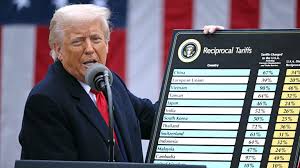
Introduction
The trade war, primarily between the United States and China, has evolved into a crucial topic for economists, businesses, and policymakers. Understanding the implications of this conflict is vital as it affects global markets, supply chains, and economic relations between countries. As nations impose tariffs and sanctions, the repercussions ripple through various sectors, influencing everything from consumer prices to international investments.
Current Status of the Trade War
As of late 2023, the trade war continues to shape global economic interactions. Initiated in 2018, the conflict saw both nations imposing tariffs on billions of dollars worth of goods. Recently, tensions have escalated again, particularly with new tariffs introduced by the U.S. on Chinese steel and aluminum imports amid ongoing disputes over technology and intellectual property rights.
Despite attempts at negotiations, the recent summits have yielded minimal progress. Experts highlight that both governments remain cautious, with concerns about national security and economic sovereignty influencing their strategies. The Biden administration has also been scrutinizing whether to shift from tariffs to more strategic economic measures, focusing on collaboration with allies to counter China’s dominance.
Economic Impacts
The trade war has significantly impacted global markets and economies. According to the World Bank, the tariffs imposed have resulted in higher prices for consumers and slower economic growth. Several industries, such as agriculture and manufacturing, have reported losses, as farmers face reduced export opportunities and manufacturers grapple with increased production costs.
Moreover, the International Monetary Fund (IMF) forecasts a potential global economic slowdown if the conflict continues without resolution, warning that extended trade barriers could inhibit recovery from the economic ramifications of the COVID-19 pandemic.
Future Outlook
Looking ahead, analysts predict that the trade war will not end abruptly. Economists suggest that while there may be short-term negotiations and compromises on specific issues, the fundamental concerns over trade practices and technology transfer between the U.S. and China are likely to persist. The ongoing geopolitical tensions also indicate that companies may need to consider diversifying their supply chains to mitigate risks associated with tariff reliance.
Conclusion
The trade war represents a significant shift in global trade dynamics, challenging traditional practices while highlighting the complexities of international relations. As businesses and governments navigate these changes, understanding the affective landscape will be crucial for adapting strategies in response to ongoing and future challenges. For readers, staying informed on these developments is essential as they may continue to influence economic situations and consumer markets worldwide.






